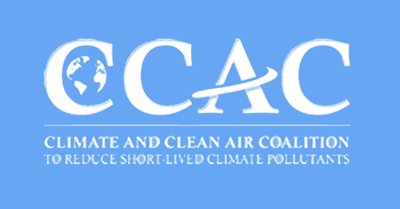Source: http://switchboard.nrdc.org/blogs/ddoniger/epa_tackles_hfc_super_pollutan.html
The Environmental Protection Agency has announced its plans to tackle the super-potent heat-trapping pollutants called hydrofluorcarbons (HFCs), an important step forward in carrying out President Obama’s Climate Action Plan.
Meeting with more than 100 industry and environmental stakeholders last Tuesday in a packed ballroom in Washington, EPA officials laid out a schedule for proposing regulations this spring and summer to replace some of the most dangerous HFCs with newer refrigerants, foam-blowing agents, and aerosol propellants that have much less impact on our climate.
As the president promised in his Climate Action Plan, EPA will use its authority under the Clean Air Act’s “Significant New Alternatives Program” (SNAP) to start removing the worst HFCs from the market. EPA officials announced that they will propose a SNAP rule in the summer addressing four of the largest categories of products where the super-potent HFCs are currently used, and where safer alternatives are now available:
- Motor vehicle air conditioning, where super-potent HFC-134a can be replaced with a new coolant (HFO-1234yf) with less than 1/300th the impact on climate
- Commercial refrigeration, including supermarkets, vending machines, and other equipment, where a range of safer alternatives are available
- Plastic foam products, ranging from insulation to packing materials, where there are safer “blowing agents” to replace HFC-134a and other high heat-trapping chemicals
- Consumer aerosols, where safer propellants can replace HFC-134a and other super-potent chemicals
EPA also announced plans to propose a second rule this spring to accelerate the approval of more low-impact replacement chemicals, to join the list of already-approved alternatives.
If nothing is done, HFC use will keep growing rapidly, both here and around the world, as the number of automobiles, home air conditioners, supermarkets and other applications keeps multiplying. Though now just a small slice of the global warming pie, HFCs could grow to nearly 20 percent of total heat-trapping pollution by mid-century.
Fortunately, we have tools under the Clean Air Act to take protective action here at home, and we have the chance to take global action under the Montreal Protocol.
Congress created the SNAP program as part of the 1990 Clean Air Act amendments to phase out chlorofluorocarbons (CFCs) and other chemicals that had critically damaged the stratospheric ozone layer. Wisely, Congress told EPA not only to get rid of the CFCs, but also to pay attention to the safety of their replacements. So EPA is required by law to continuously review and approve new uses of alternative chemicals to assure that they do not pose dangers to our health or the environment – including by contributing to dangerous climate change.
Since the 1990s, the SNAP program has helped ensure that the climate impacts of alternatives were considered as CFCs and other ozone-depleting chemicals were phased out. In addition to destroying ozone, CFCs were also extremely powerful heat-trapping pollutants. EPA’s early SNAP actions approved a first wave of ozone-safe replacements, including HFCs that were also relatively better for the climate than the CFCs. HFC-134a, for example, has about 1/10th the heat-trapping impact of CFC-12, the original coolant in car air conditioners.
But chemistry and technology don’t stand still, and neither do the imperatives of climate change. Now we have newer compounds – both fluorinated and non-fluorinated – that have less climate impact. As mentioned, the newest coolant for car air conditioners has less than 1/300th the heat-trapping potency of HFC-134a – and less than 1/3000th the potency of the original coolant CFC-12. So it is time to transition away from the HFCs.
The opportunities and rewards for leading, innovative companies will be high. Some have already brought replacement chemicals and redesigned products to the marketplace. The air conditioners in several hundred thousand new cars, for example, are already equipped with HFO-1234yf. But the penetration of new compounds and new products goes too slowly if the old ones are allowed to remain on the market indefinitely. Setting clear timelines for transitions will support companies that invest in innovation, create new jobs in American manufacturing, give consumers more efficient and sustainable products, and provide certainty for all participants in the marketplace.
EPA’s SNAP actions at home will send a clear signal to other countries that the U.S. is “walking the walk” on HFCs. For five years, the U.S. has co-sponsored proposals to phase down HFCs under the Montreal Protocol, the treaty that saved the ozone layer and slowed climate change by phasing out CFCs worldwide. An HFC phase-down under the Montreal treaty has widespread support, including from China and most developing countries. India, however, stands out as one of a handful of skeptics. Indian officials have asked whether the U.S. is prepared to act at home. President Obama’s Climate Action Plan and EPA’s actions on HFCs show that the answer is “yes.”
EPA deserves credit for focusing its initial SNAP actions some of the largest uses of the super-potent HFCs. As EPA prepares its new proposal, NRDC will advocate for deadlines that achieve the most rapid possible transition to safer alternatives. Stay tuned for next steps as the year unfolds.







